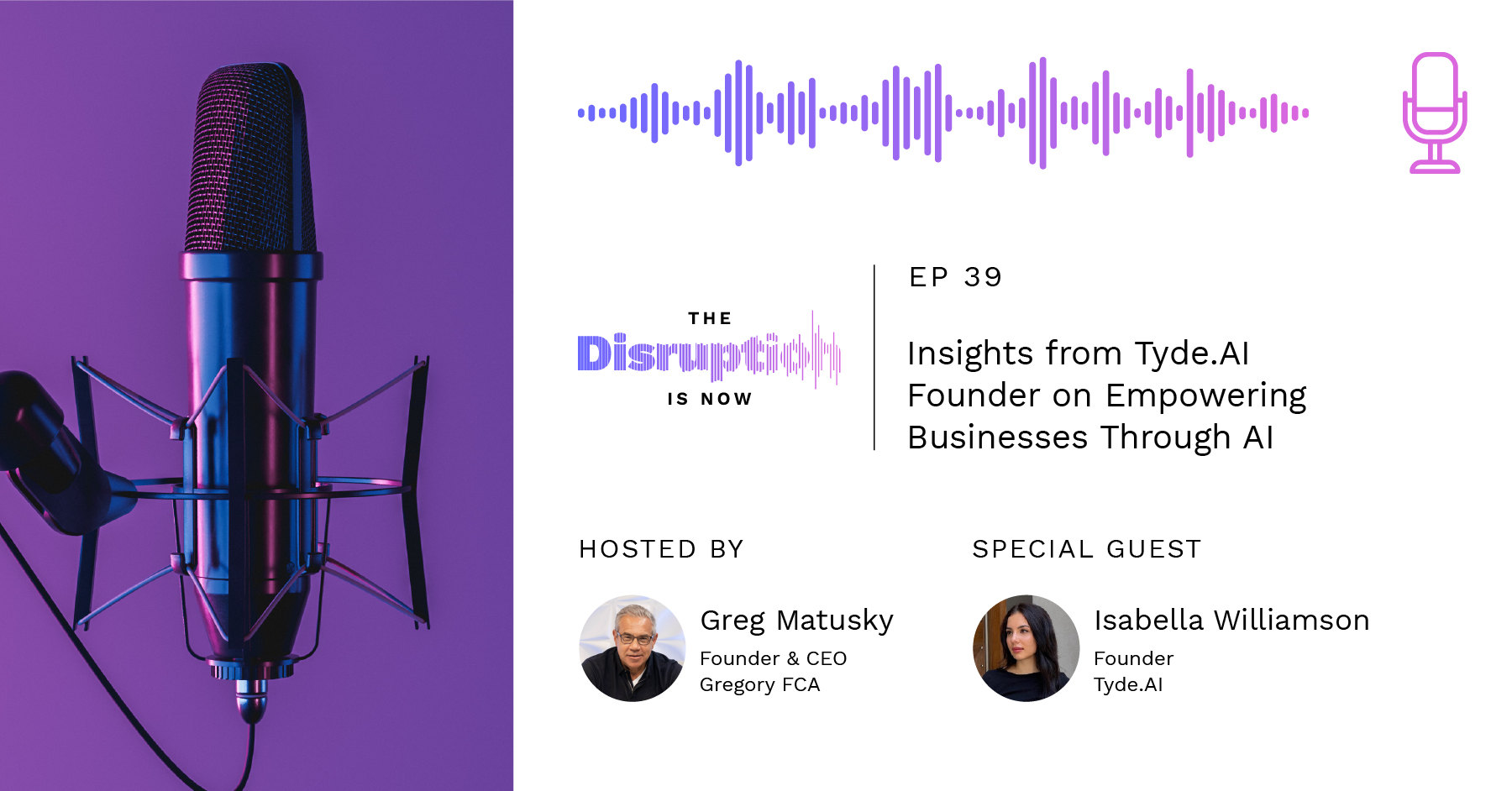AI is transforming the PR industry in ways many leaders haven’t fully grasped yet. Employees on the ground are driving this change, often without the knowledge or guidance of their bosses. This grassroots adoption of AI tools brings both incredible opportunities and significant challenges.
Isabella Williamson, founder of Tyde.AI joins host Greg Matusky on The Disruption is Now to examine the many ways AI is reshaping PR, tout the importance of safety and transparency, and share examples of how AI has uplifted careers.
But the journey to that point is all about change management, and both Isabella and Greg share advice for how to best approach AI adoption to maximize productivity, the quality of work, and the value companies deliver to their clients.
Watch now:
Key takeaways
Employees increasingly push for AI adoption
AI integration increasingly starts with employees who recognize the practical benefits of AI tools in their daily tasks. Isabella noted these workers see the utility of AI firsthand, while business leaders are more likely to lag, unsure of how to strategically implement AI.
This leads to issues of transparency, with employees secretly using AI tools. Without buy-in from the top, employees might feel like they are cheating when they use AI, which leads to shadow IT and executives unaware of how extensive AI use is in their organization.
Successful AI adoption is all about change management
Isabella emphasized the importance of creating a safe environment for employees to discuss AI use openly. Greg shared that initially, employees were skeptical and feared replacement when Gregory FCA began integrating AI into workflows. It was building trust and demonstrating AI’s potential to enhance their roles and careers that helped overcome this resistance.
He stressed that creating a “joyful” and safe space for AI experimentation was crucial to gaining employee participation.
Clear AI policies set employees free
For successful AI integration, companies need specific, detailed policies that go beyond general principles. Isabella pointed out that vague guidelines like “be transparent about your use” leave too much ambiguity.
Companies need to spell out practical steps, such as how to use AI tools securely, what transparency looks like, and how to communicate AI use to clients. Greg shared that his firm includes an AI clause in contracts, detailing safeguards and transparency measures, which has been accepted near-universally by clients.
AI can enhance quality as well as productivity
Isabella referred to an MIT study showing a 40% increase in productivity and an 18% improvement in content quality with generative AI. This boost is especially valuable for non-native English speakers, who can produce higher-quality work with AI assistance.
Greg shared practical examples from Gregory FCA, where AI tools have enabled rapid content creation and high-quality outputs, impressing clients and enhancing overall efficiency. For instance, during a major client crisis, his team used AI to swiftly develop a comprehensive reputation repair plan, demonstrating AI’s capacity to handle complex, time-sensitive tasks.
Key moments
- How employees, not leaders, are driving AI use in PR. (1:46)
- Challenges of adopting AI (3:05)
- How to structure change management for effective AI implementation (8:17)
- The importance of safe spaces (10:12)
- Highlighting the professional value of AI skills (12:45)
- Putting guardrails in place (15:25)
- Using AI to reduce friction in client relationships (18:25)
- Shifting business models and value (19:55)
- 3 buckets of AI skills (24:46)
- Change management in depth (26:20)
- Examples of AI skeptics becoming advocates (30:55)

